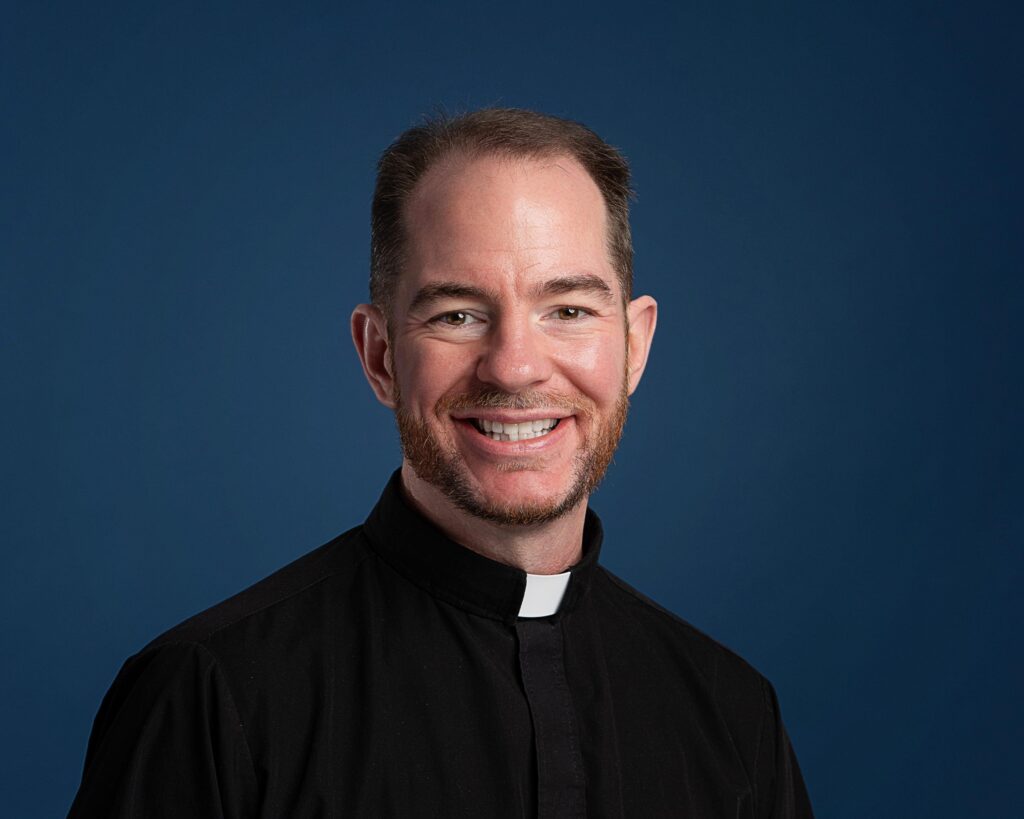
Jesuit Scholar's Search for Films' 'Theology of Horror' Finds the Sacred in the Screams
By: Our Sunday Visitor
From 2013 to 2023, the market share for horror films doubled from 4.87% to 10.07%, according to movie industry data service The Numbers

(OSV News) — Beneath the nation’s fascination with horror films — which translates into a multibillion-dollar industry — lurks a hidden quest for the divine, a theologian with expertise in the genre told OSV News.
“There’s a deep hunger for (transcendent) experiences and the over-the-topness of the haunted house. … I think we’re in a time (when) we face a crisis of interiority,” said Jesuit Father Ryan G. Duns, associate professor and department chair of theology at Marquette University in Milwaukee. “What’s not being addressed is the internal terrain of the human heart. And I think to be able to go to a place and be scared, to feel in a safe way vulnerable and at the mercy of forces beyond yourself … weirdly, I think it lets people feel. And I think people are desperate to have sensations and to feel.”
Screams sell, as film industry analytics show. From 2013 to 2023, the market share for horror films doubled from 4.87% to 10.07%, according to movie industry data service The Numbers. That increase has been sustained through the current year, with the genre claiming 10.68% of the market even ahead of the Thanksgiving weekend movie releases. In 2023, horror films raked in $798 million in the U.S.
Buried within all those screams is a cry for the transcendent, said Father Duns.
“Of all genres, horror is by far the most conservative,” Father Duns told OSV News. “It presumes that the viewer, or the reader, and the characters share a commitment or a belief in a stable world order. The stability of that order has to be profoundly interrupted by the in-breaking of the monstrous.”
He said, “The monster threatens our sense of normality, and it’s everything we can do to restore that sense of the normal.”
In the process, Father Duns said, “fragments” of eternal truths can be glimpsed — and he shares how in his new book, “The Theology of Horror: The Hidden Depths of Popular Films,” which the University of Notre Dame Press released October 15.
Writing the book was a bit of a penance for his family, Father Duns told OSV News.
“My parents are saints,” he laughed. “I had a research leave in the spring of 2023 and came home at Christmas to my parents (to work on the book). … I sat on my parents’ couch and I watched (horror) movie after movie, to the point where my mother was like, ‘If I hear any more screaming … It is Christmas and all I hear is bloodcurdling wails.”
Father Duns said he had initially titled the book “Horror: Metaphysical and Theological Fragments,” since he treated each of the 15 films he surveyed as “a fragment … a unique event that opened up a way of talking about theological and metaphysical phenomena.”
While that may sound like heady stuff, Father Duns — who teaches a course on the book’s topic — wants to keep such grave-sounding topics accessible to students, so he starts with some barebones definitions.
Drawing on the work of Ann Radcliffe, the pioneering English Gothic novelist, Father Duns describes “horror” as being exactly what its name suggests.
“Horror is the genre … that intends to provoke the feeling of horror,” eliciting both a psychological and bodily response, he said.
As Father Duns explains in the introduction to his book, the “horrifying entity” — whether it’s Freddy Krueger from “Nightmare on Elm Street” or Pennywise from “It” or the great white shark in “Jaws” — “creates a breach in one’s known world and threatens that world with annihilation.”
The underlying intent of horror is “to unsettle and provoke the audience to examine and rethink the nature of reality, our place in the cosmos, and the meaning of existence” — which the Gospel itself also seeks to do, writes Father Duns.
With a sense of the divine “displaced” in an increasingly secular, post-Christian culture, the horror genre can be an unexpected point of evangelization, Father Duns’ introduction asserts.
“I wouldn’t say you (should) tell your 10-year-old, ‘We’re going to watch scary movies tonight,’ but there is going to be a natural interest in it,” he told OSV News. “To the savvy parent, I would say, ‘As you watch, use this as an opportunity to catechize.’ … God is at work in all things and we can turn even these seemingly profane films into moments of theological reflection if we have the eyes to see them.”
Father Duns stressed that he does not intend “to put a bit of chrism oil” on villains such as Leatherface (“The Texas Chainsaw Massacre”) or Jason Voorhees (“Friday the 13th”), nor is he “confirming Freddy Krueger.”
In fact, as a lifelong fan of the genre, he said he believes filmmakers could “make movies much scarier” by using “a lot less blood.”
“Save on the blood budget, and go hire a good theologian to give you some advice on what’s really scary,” Father Duns said.
He also admitted there are some horror films he “would not be keen to watch because they glorify violence.”
He pointed to several releases by musician and writer-director Rob Zombie — whose credits include “House of 1,000 Corpses,” “The Devil’s Rejects,” and remakes of John Carpenter’s “Halloween” — and to Lionsgate’s “Saw” and “Hostel” franchises as works that “in some ways … celebrate or give a pass to the worst parts of ourselves.”
Yet, said Father Duns, instructive moments can be found in, for example, “The Texas Chainsaw Massacre” — which in its original 1974 version, ahead of subsequent franchise releases, was surprisingly devoid of on-screen gore, relying instead on the power of suggestion.
“What a bleak, bleak world” the original film portrays, said Father Duns. “It is truly a godless film. And in one way, an appreciative viewer can say, ‘Is this what we want to live like?'”
Similarly, said Father Duns, “Night of the Living Dead” — the 1968 classic horror film by George A. Romero — prompts the question of “who really are the living dead” among the movie’s main characters, who battle suspicion and self-interest as they fend off murderous ghouls.
Still other horror films, including series such as “The Conjuring,” “Insidious,” “The Black Phone” and “The Exorcist,” present even more explicit opportunities to explore “the battle between good and evil,” said Father Duns.
“Now, sure enough, I would love people to have the same experience I do when celebrating Mass or kneeling in adoration, in prayer — that peace, tranquility, interior calm,” said Father Duns.
But if a person is watching certain horror films with an astute awareness of their premises and plots, he said, “I think you can have a much more enriched experience by viewing them with a Catholic eye.”
– – –
Gina Christian is a multimedia reporter for OSV News. Follow her on X.

